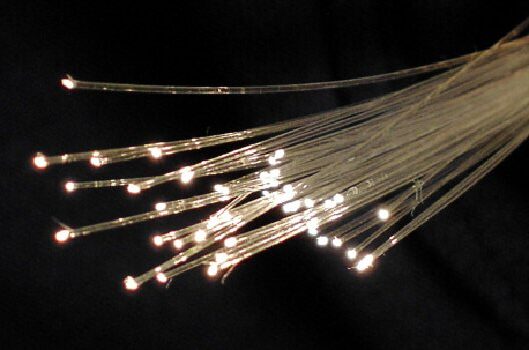Fiber optics have been around a long time. They were first pioneered all the way back in the 1960s and have been used for communication since the 1970s. It wasn’t until the 21st century that fiber really took off though. Improvements in manufacturing combined with a need for tons of capacity around the dawn of the internet era. Fiber optics can carry information faster, farther, and in less physical space than copper wires. Today, practically every long run uses either fiber optics or microwave transmission. Copper wires aren’t just on their way out, they’re yesterday’s news.
Still, there’s one place you’ll see a lot of copper and that’s inside homes. Coaxial cables are the way that most information gets into your home, whether we’re talking about internet, pay TV, antenna, or something else. But could that change?
You technically could do it
First of all, I don’t think that there would be any technical limitation to using fiber in the home. I don’t honestly believe it’s any more expensive, to start. I mean, a lot of devices already have some sort of optical out, and most of those devices don’t even use it. If fiber transmission was so expensive, devices wouldn’t have optical outputs.
Fiber would be really helpful for places like boats and RVs where wiring space is at a premium. A single strand of fiber could carry a lot more information and take up a lot less space. So it really comes down to trying to understand why no one does it this way. I’m just going to guess.
1. It’s too delicate
Fiber optic cables are delicate. They don’t like to be jostled a lot. Obviously, you can’t make a cable that’s as thin as a human hair and as tough as a coaxial cable. It’s not going to happen. A fiber cable in the wall could get nicked when you try to hang a picture and that would be the end of it. So, it’s not a great candidate for anywhere that people are doing things themselves. Using fiber for the optical out of your TV is ok because if you do mess up the cable it’s easy to replace. It’s a little harder if it’s buried in the walls.
2. Running it and replacing it is expensive
Making fiber optic lines to the right size is expensive. It takes much fancier tools than the typical compression tool used for coax cables. It’s also quite a skill to learn, as I found out myself. The tool itself costs in the low four figures and I ruined quite a few fiber strands trying to learn how to terminate them.
So what you’re really talking about here is a lot of money and training for technicians, and a lot of money to spend if some sort of repair is needed. That’s not a good recipe for typical home use. It might be worth it for an RV or boat, but those are relatively small markets.
3. “If it ain’t broke…”
The real reason that you don’t see fiber inside home installations is, coax cables work just fine. There’s nothing wrong with them for most installs. They’re tried and true. Your average install location doesn’t need fiber. There’s room in the walls and the speed of information over copper is just fine.
Yes, there are some cases where you do need fiber inside the premises. If you’re working with super-high-speed data, you’ll need it. There are also cases where fiber is used because copper is too easy to snoop on. I’m told by my friends in the espionage community (of which I absolutely don’t have any) that it’s possible to detect information flowing through a copper cable and extract it from a distance. I don’t know how you do it, but apparently it’s doable. So if you’re planning something really really secure, you want fiber. That’s what they tell me.
Bottom line
Even though fiber would be a benefit for some customers, it’s not likely to happen in general. There’s not enough need for it and the costs involved are too great. Kind of a bummer, but that’s the way it is I guess.
Oh, by the way, if you need fiber optics, accessories, or even good old fashioned coaxial cables, shop at SolidSignal.com where you’ll find all of those things. If you’re not sure what you need, call us at 888-233-7563 or fill out the form below. We have real, trained experts in our US corporate offices who can answer all your questions.





